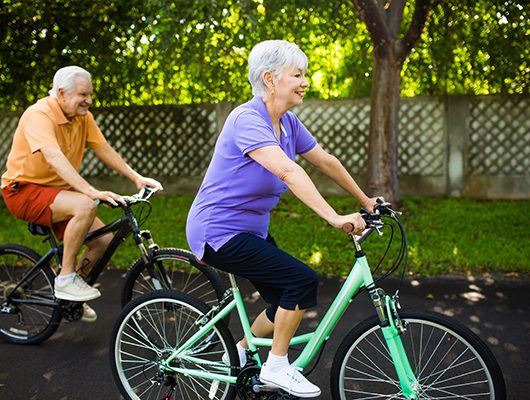Physical exercise stands as a fundamental pillar for extending health and quality of life in older adults. A recent global consensus published in ScienceDirect highlights how physical exercise, when appropriately prescribed, not only prevents diseases but also improves physical and cognitive functionality, making it an essential strategy for healthy aging.
The Impact of Exercise on Aging
Aging is a natural life process characterized by bodily changes that, over time, make individuals more vulnerable to diseases and, eventually, death. However, maintaining an active lifestyle and engaging in physical exercise can help delay this process, improve health, and prevent chronic conditions such as cardiovascular diseases, cancer, diabetes, musculoskeletal disorders, and respiratory illnesses, among others.
Physical exercise not only serves as a tool for disease prevention but also as a treatment for certain health conditions. Structured physical exercise programs, including aerobic, resistance, balance, and flexibility activities, are crucial for maintaining functionality in older adults. Among these, progressive resistance training (PRT) stands out as a key tool to combat sarcopenia, frailty, and osteoporosis, which are common conditions in this stage of life. Additionally, combining physical exercises with cognitive tasks can significantly improve mobility, strength, and mental functions, reducing the risk of falls and optimizing functional capacity.
It is important to note that the benefits of physical exercise vary among individuals, so exercise routines should be personalized, taking into account each person’s needs and capabilities, to achieve the best results.
Integrating Physical Exercise into Healthcare for Older Adults
Despite the proven benefits, exercise is not yet fully integrated into medical prescriptions for older adults. Many healthcare professionals need more training to include regular physical activity as part of treatment, which could reduce the overuse of medications and improve patients’ overall well-being. A strategy that combines exercise with medication could be ideal for optimizing the health and independence of older adults.
Recommendations for Physical Exercise in Older Adults
The study titled “Global Consensus on Optimal Exercise Recommendations for Enhancing Healthy Longevity in Older Adults (ICFSR)” proposes the integration of physical activity into health promotion, disease prevention, and treatment for older adults. It offers evidence-based guidelines for specific exercises, highlighting their physiological benefits and their role in managing chronic conditions such as cardiometabolic diseases, cancer, frailty, and neuropsychological issues. It also emphasizes the importance of personalizing exercise according to individual needs and proposes strategies to fully incorporate it into geriatric care, aiming to improve quality of life and extend health during aging.

Types of Physical Exercise for Older Adults
Gait Training
Gait training in older adults has shown mixed results, being more effective when using multicomponent programs that combine balance exercises, pace changes, treadmill walking, or stair climbing. Gait speed is key for survival and should be prioritized, while gait variability helps reduce the risk of falls. For those with mobility issues, alternatives such as aquatic exercises or recumbent bikes can be used, although they do not directly improve gait stability.
Aerobic Training
Aerobic training improves cardiovascular endurance through continuous activities like walking, swimming, or cycling. It should begin with short, low-intensity sessions, gradually increasing duration and intensity based on physical condition. Personalizing exercise using perceived exertion scales is crucial, especially for individuals with heart conditions. Proper hydration and appropriate clothing are also essential to avoid thermoregulation issues.
High-Intensity Interval Training (HIIT)
HIIT combines short periods of intense exercise with rest, offering cardiovascular, muscular, and cognitive benefits. Although it is safe for supervised older adults, caution is required for those with high cardiovascular risk or frailty. This method is time-efficient and significantly improves aerobic capacity, but more research is needed to validate its safety in unsupervised settings and its impact on individuals with limited mobility.
Progressive Resistance Training (PRT)
PRT is effective for improving strength and muscle mass in older adults, even in those with severe frailty. It is recommended 2-3 times per week, starting with light loads and gradually increasing intensity. This training should include functional exercises, such as chair stands, to enhance daily activities. Although it may cause delayed onset muscle soreness (DOMS), this is part of the adaptive process and should not be a cause for concern.
Power Training
Power training focuses on improving muscle strength and speed, which are essential for preventing falls and maintaining functionality. It is particularly useful for counteracting the loss of fast-twitch muscle fibers associated with aging. It can include bodyweight exercises, weights, or machines, prioritizing explosive and controlled movements. While beneficial, it should be initiated cautiously in frail older adults, adapting intensity and frequency based on their tolerance.
Overall, these training methods offer multiple physical and psychological benefits but should be personalized and properly supervised to maximize results and minimize risks in older adults.
Final Reflection
This global consensus underscores the importance of exercise as a key tool to address the challenges of aging. Beyond physical benefits, well-designed physical activity can transform the quality of life for older adults, offering an economical and effective solution to promote healthy longevity. However, for this to become a reality, it is essential to integrate exercise into medical practice and educate both healthcare professionals and the general public about its importance.
Continue Your Professional Development
In a world where the older population is rapidly growing, professionals trained in physical activity and health are more needed than ever. The Master in Physical Activity: Sports Training and Management from Universidad Internacional Iberoamericana (UNIB) provides you with the tools to become an expert in promoting active and healthy aging, addressing one of the greatest public health challenges of our time. Help people live longer and better, and become the professional society needs to face the challenges of the future.
Take the first step toward a career that transforms lives! Request information today and join the change.

